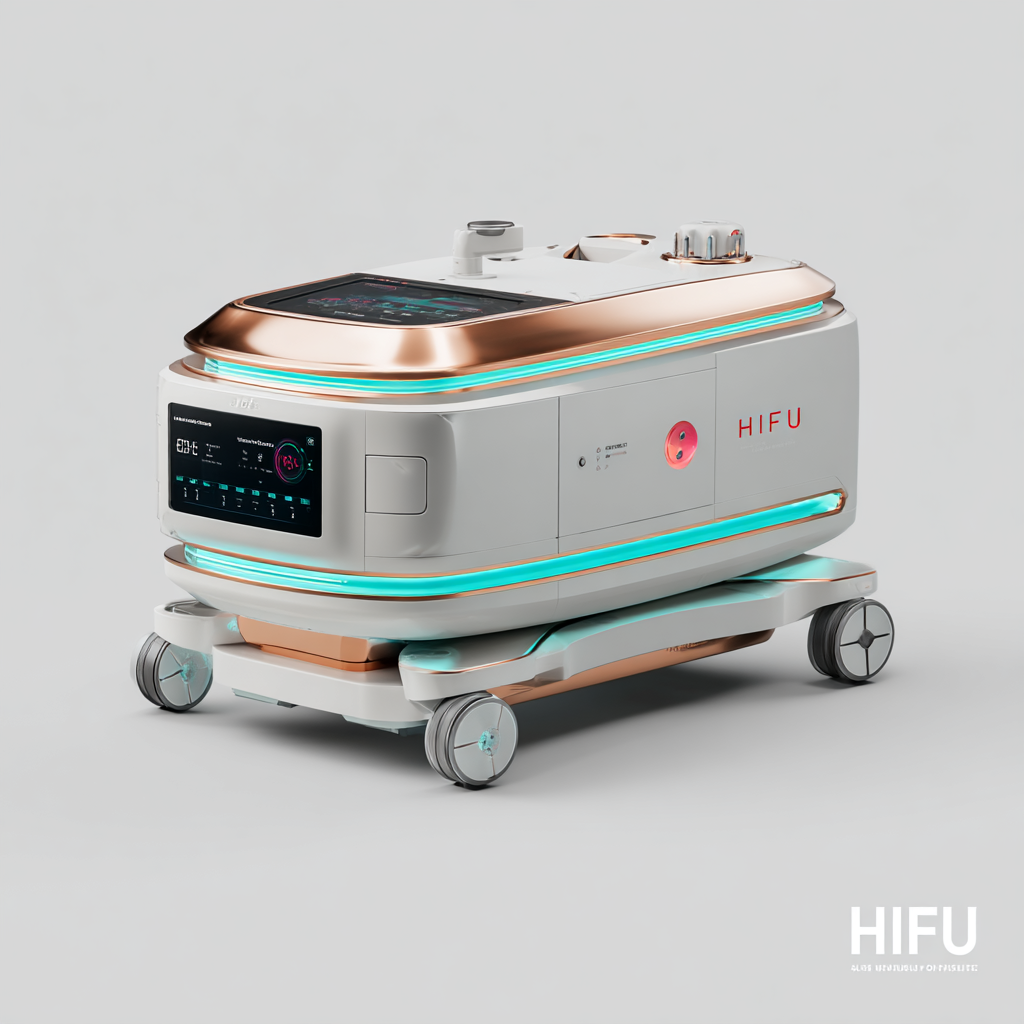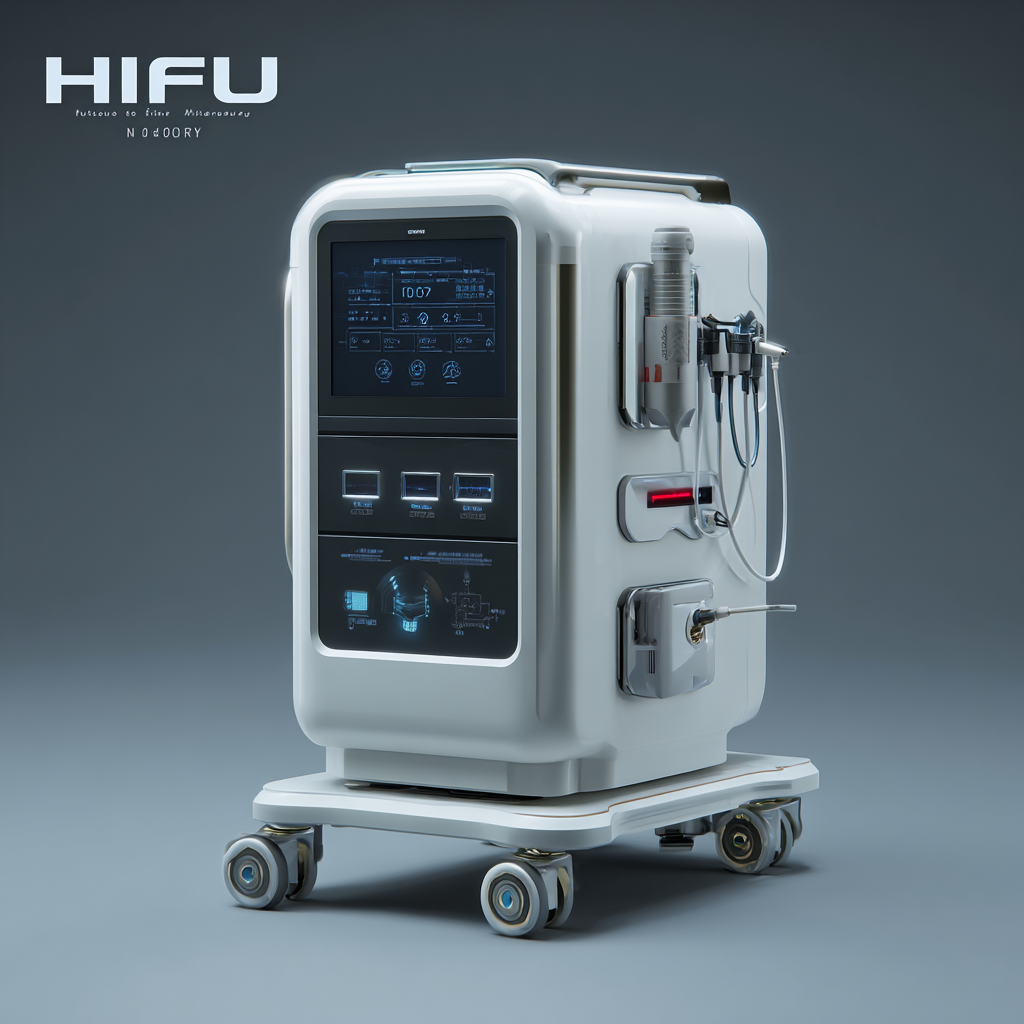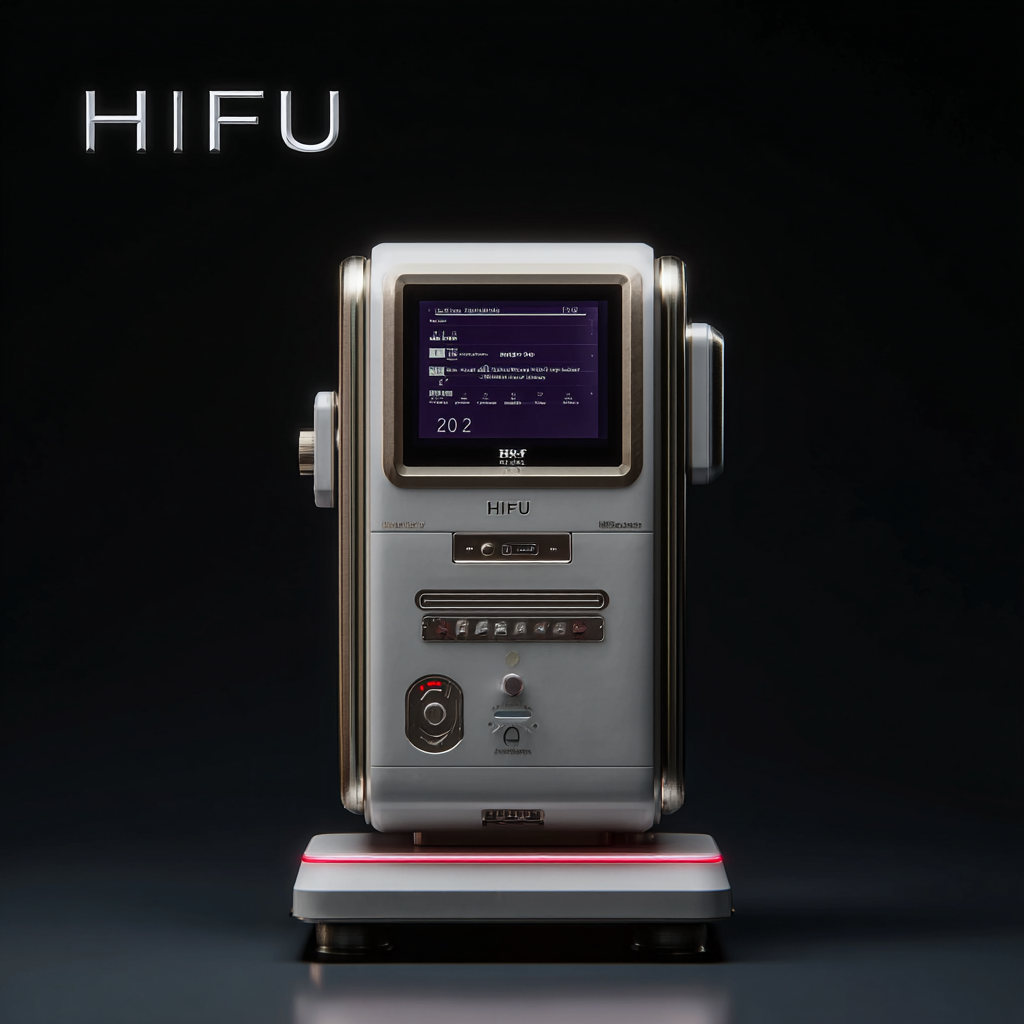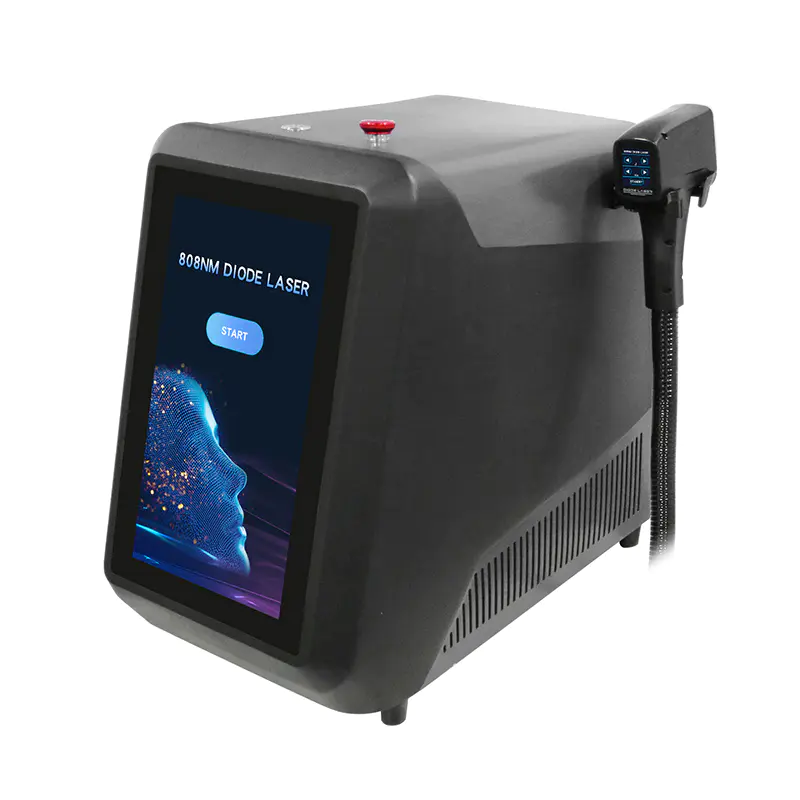Exploring the Future: Innovations in HIFU Technology for 2025 and Beyond
As we delve into the future of medical technology, High-Intensity Focused Ultrasound (HIFU) is emerging as a groundbreaking innovation in the realm of non-invasive treatments. The global HIFU machine market is projected to grow significantly, with a compound annual growth rate (CAGR) of approximately 9.2%, reaching a valuation of over $900 million by 2025, according to a recent report by Market Research Future. This surge is fueled by the increasing demand for effective therapeutic solutions across various medical spheres, including oncology and aesthetic treatments. China's commitment to manufacturing high-quality HIFU machines is pivotal in capturing international respect and market share, as the nation leverages advanced technology and stringent quality control measures. As we explore the innovations in HIFU technology for 2025 and beyond, we uncover the transformative potential of these devices in enhancing patient outcomes and redefining modern medical practices.

Advancements in HIFU Technology: A Glimpse into 2025 and China's Role
As we look ahead to 2025, High-Intensity Focused Ultrasound (HIFU) technology is set to revolutionize various medical applications, particularly in oncology and aesthetic procedures. Recent industry reports indicate that the global HIFU market reached approximately $500 million in 2022 and is projected to grow at a CAGR of over 15% through 2025. This remarkable growth can be attributed to China's significant investments in HIFU research and development, positioning the country as a leader in this innovative treatment modality.
China's role in advancing HIFU technology cannot be overstated. With several hospitals incorporating cutting-edge HIFU devices into their treatment plans, patient outcomes are improving significantly. Recent studies show that HIFU can effectively treat prostate cancer with minimal side effects, providing a non-invasive alternative to traditional surgical methods. Additionally, this technology is gaining traction in cosmetic dermatology, offering non-surgical skin tightening and wrinkle reduction with high satisfaction rates among patients.
Tips for patients considering HIFU treatments include thoroughly researching the facilities and practitioners specializing in this technology. Ensure that the medical professionals are certified and have a solid track record of successful procedures. Furthermore, discussing all potential risks, benefits, and expectations during the consultation can enhance the overall treatment experience, helping patients make informed decisions about their health.
Key Features of HIFU Innovations: Efficiency, Precision, and Accessibility
Innovations in High-Intensity Focused Ultrasound (HIFU) technology are rapidly transforming the landscape of tumor treatment, emphasizing efficiency, precision, and accessibility. HIFU offers a non-invasive alternative to traditional surgical methods, significantly reducing the risks associated with open surgeries. As the technology develops, it promises not only enhanced safety but also minimal side effects, which is a crucial consideration for patients seeking cancer treatment options.
Recent collaborations have highlighted the potential of AI-driven HIFU solutions to further enhance treatment accuracy. By integrating advanced artificial intelligence algorithms, the precision of targeted therapies is improved, allowing clinicians to customize treatments to meet individual patient needs effectively. This evolution in technology is paving the way for broader accessibility, ensuring that more patients can benefit from state-of-the-art therapeutic techniques that prioritize their well-being and recovery. As we look toward 2025 and beyond, these innovations herald a new era in medical treatment, where patient outcomes are at the forefront of healthcare advancements.
Competitive Edge: How Chinese Manufacturers are Shaping the Global HIFU Market
The global High-Intensity Focused Ultrasound (HIFU) market is poised for significant expansion, expected to increase from approximately $115.55 million in 2023 to an impressive $194.18 million by 2030. This promising growth trajectory is indicative of the technological advancements and rising demand for non-invasive treatment options. As we look towards 2025 and beyond, it becomes increasingly clear that innovation within the HIFU sector is essential for remaining competitive.

Chinese manufacturers are at the forefront of this evolution, driving key developments in the HIFU technology landscape. By embracing cutting-edge research and development, these companies are enhancing the efficacy and accessibility of HIFU treatments globally. Their commitment to innovation not only improves patient outcomes but also positions them as dominant players in the international market.
With the increasing acceptance of HIFU therapies, particularly in oncology and aesthetic medicine, it is evident that China will continue to shape the future of HIFU technology, establishing a crucial competitive edge in the global arena.
The Future of Medical Applications: Expanding HIFU Beyond Aesthetics
High-Intensity Focused Ultrasound (HIFU) technology has garnered significant attention for its applications in aesthetics; however, its potential in the medical field is rapidly expanding. The future of HIFU lies in its ability to provide non-invasive treatments for a variety of medical conditions. As we look towards 2025 and beyond, innovations in HIFU are likely to lead to breakthroughs in treating tumors, alleviating chronic pain, and improving rehabilitation protocols. The precision and efficacy of HIFU can revolutionize how we approach various health challenges, making treatments safer and more efficient.
In conjunction with the rise of artificial intelligence in healthcare, HIFU provides a powerful duo that can enhance patient outcomes. Recent advancements in AI can optimize HIFU procedures by improving imaging techniques and treatment planning, allowing for personalized care tailored to individual patient needs. As healthcare professionals embrace these technologies, the medical landscape will transform, enabling quicker diagnoses and more targeted therapies. This synergy between HIFU and AI represents a remarkable opportunity to redefine medical applications, moving beyond aesthetics into critical areas of health and wellness.

Challenges and Opportunities: Navigating the HIFU Landscape in 2025 and Beyond
As we look ahead to 2025 and beyond, the landscape of High-Intensity Focused Ultrasound (HIFU) technology presents both significant challenges and unique opportunities. The rapid advancement in medical technology offers the promise of more effective and less invasive treatment options. However, the integration of HIFU into standard practice faces obstacles including regulatory hurdles, the need for extensive clinical trials, and the challenge of ensuring wide accessibility for patients.
Navigating this evolving landscape requires collaboration among researchers, medical practitioners, and technology developers. As innovations continue to emerge, such as improved imaging techniques and enhanced ultrasound equipment, the potential for HIFU to revolutionize treatment for various conditions, from tumors to cosmetic procedures, becomes increasingly tangible. By addressing regulatory challenges and fostering partnerships across disciplines, we can harness the full potential of HIFU technology, paving the way for groundbreaking therapeutic applications that benefit patients worldwide.
Exploring the Future of HIFU Technology
This chart illustrates the expected growth of the global HIFU technology market from 2023 to 2027. As innovations continue to emerge, the market size is projected to expand significantly, highlighting both challenges and opportunities within the sector.
News
- What Can A Professional Skin Care Analyzer Do For Facial Treatment?2025/03/18
Facial treatment (using skincare products or various machines) has been very popular. What can a professional skin care analyzer do for facial treatment?
- What Are Upper Lip Hair Removal Machine Side Effects And How to Avoid?2025/03/13
Lip hairs are very unsightly, especially for female. Other traditional hair removal methods (such as shaving and depilatory creams) unluckily cause more hair.
Products
Inquiry For Price List
For inquiries about laser hair removal, hifu machine, cryolipolysis machine or price list, please leave your email to us and we will be in touch within 24 hours.
Contact Us
- Fanghu West 2nd Road, Huli District, Xiamen City, Fujian Province, China
- sale@bitasbeauty.com























